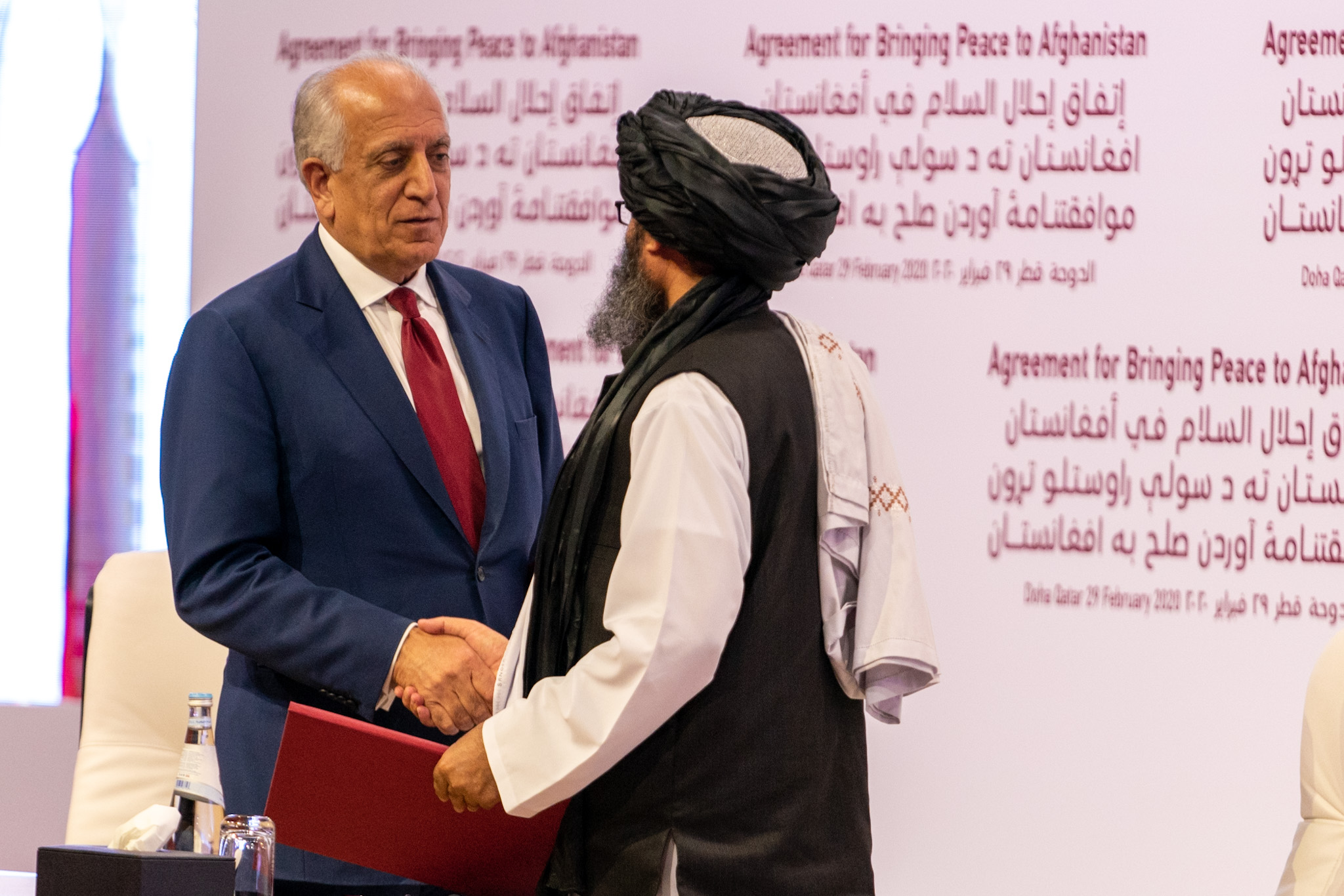A Bad Deal for Afghanistan
The U.S.-Taliban peace agreement technically conditions U.S. military withdrawal on the Taliban’s agreement to deny al-Qaeda the use of Afghanistan as a terrorist safe haven. But the agreement is lopsided.

Published by The Lawfare Institute
in Cooperation With

The agreement that the United States and the Taliban signed on Feb. 29 is unlikely to achieve the U.S.’s single most important goal of its nearly 20-year effort in Afghanistan: to deny safe haven to al-Qaeda. President Trump or his successor should scrap the deal and increase military pressure until the Taliban publicly denounces al-Qaeda and agrees to verifiably sever links with the group.
The United States and the Taliban have held talks, on and off, since before the terrorist attacks of 2001. Clinton administration officials supported international efforts to broker an energy pipeline agreement with the Taliban in the late 1990s. U.S. officials tried to persuade the group to hand over al-Qaeda leaders in 2001, according to Steve Coll’s account. The two sides engaged in more serious talks in 2011 and 2012, at the height of the U.S.’s counterinsurgency campaign. The talks petered out because the Taliban understood they could simply wait out the U.S., but not before a prisoner swap that saw the return of U.S. serviceman Bowe Bergdahl in 2014.
The two sides returned to the negotiating table in 2018 when the Trump administration signaled its desire to withdraw all American forces and thus meet the Taliban’s chief negotiating demand. The “Agreement for Bringing Peace to Afghanistan,” signed on Feb. 29, technically conditions the U.S. military withdrawal on the Taliban’s agreement to deny al-Qaeda the use of Afghanistan as a terrorist safe haven.
But the agreement is lopsided. The obligations on the U.S. are clear, specific and measurable: Remove all U.S. troops and vacate all military bases within 14 months. The Taliban’s obligations are, by contrast, vague and under-specified. The Taliban promise not to let any group use Afghanistan to threaten the United States, not to cooperate with or host any such group, and to “send a clear message” that such groups “have no place in Afghanistan.” The agreement contains no details and no means of enforcement or verification for the Taliban’s commitments.
The agreement does not end the war in Afghanistan because it does not include one of its chief belligerents, the Afghan government, with whom the Taliban refused to negotiate. The agreement ostensibly obligates the Taliban to begin separate talks with the Afghan government this week to resolve intra-Afghan disputes and, presumably, achieve a negotiated end to the war. Separating the U.S. withdrawal from war-ending negotiations between the two Afghan combatants was a successful tactic by the Taliban to divide its enemies and prevent them from consolidating their leverage. For the United States, it provided an excuse to withdraw while claiming to respect Afghan authority over Afghan problems, despite the Afghan government’s protest against the process.
How will the United States monitor or enforce the Taliban’s compliance? If al-Qaeda returns to Afghanistan, what would the U.S. do? Proponents of the deal might claim the U.S. will respond with drone strikes. But drones are not magic tools that simply appear in the sky. They require a ground presence for airfields, maintenance, supply and more. Withdrawing troops means withdrawing drones.
Beyond the U.S.’s inability to enforce the agreement, it is unclear what the agreement even requires the Taliban to do. How many al-Qaeda members are required for the U.S. to consider the Taliban in breach of their obligations? Just one? 100? Or 1,000? What constitutes the “use” of Afghanistan for terrorist activity? Is anyone associated with al-Qaeda forever barred from entry? Will the United States share its terrorist watch list with the Taliban for them to enforce at their borders? The Taliban could simply issue a press release claiming that no hostile group exists in Afghanistan, pledge to keep it that way and claim they have fulfilled their part of the agreement.
The agreement is so toothless and vague that there is almost nothing the Taliban could do to cause themselves to be in breach of their obligations short of hosting a welcome-back parade for al-Qaeda militants in downtown Kabul. A good test of the agreement is to ask: What exactly do the Taliban have to do to fail at their obligation to deny safe haven to al-Qaeda? Under what conditions would the United States halt or reverse its withdrawal?
The agreement does not say. It leaves the most crucial and important part of American interests to interpretation and to the honesty and good faith of the Taliban. The Taliban can and will claim they are doing their part, and the United States will have no way to hold the Taliban accountable. The Taliban simply have to wait for 14 months to achieve their single most important negotiating demand: the full, complete and verified withdrawal of U.S. forces from Afghanistan.
After that happens, it does not matter what the Taliban do. They could restart their insurgency against the Afghan government, resume ties with other militant groups or march on Kabul. And it is unlikely that any American official would risk the political blowback of trying to reengage in an unpopular war.
Critics who complain that the United States should stop trying to rebuild or pacify Afghanistan are a decade late to the conversation: The United States stopped trying to do those things in 2012, when President Obama started the troop withdrawal. The U.S. presence in Afghanistan today carries out counterterrorism operations and provides limited assistance to the Afghan military. And the American military partnership with Afghanistan is an important resource for U.S. and allied global counterterrorism operations. Sustaining that parternship, including with a military presence on the ground in Afghanistan, is in America’s interest so long as jihadist groups in South Asia remain a threat to the United States.
The American presence in Afghanistan is not large. It is not expensive. It is no longer costing hundreds or even dozens of casualties each year (just 22 were killed there in 2019, compared to nearly 500 in 2010). There is no mass anti-war movement. The American people are not sick of the war: They are hardly even paying attention to it. Just two weeks ago Secretary of Defense Mark Esper claimed that “[n]obody right now is calling for the complete removal of U.S. and coalition forces” from Afghanistan. No one, that is, except the Taliban—and now the Trump administration has joined them.
Regardless, the Trump administration may not get to declare victory and leave. The Afghan government has refused to release Taliban prisoners, as stipulated under the agreement to which they were not a party. The Taliban has continued to launch attacks against U.S. and Afghan targets since the signing, to which the U.S. responded on March 4 with an airstrike.
If, despite the violence and the likely failure of intra-Afghan talks, the U.S. goes through with the withdrawal, it will have withdrawn all assets and all forces that provide the best intelligence, surveillance and reconnaissance against the most dangerous terrorist targets in the world, and left our security in the hands of the very Taliban who harbored them in the first place. There is no compelling reason for this deal to exist.



-(1).png?sfvrsn=fc10bb5f_5)
